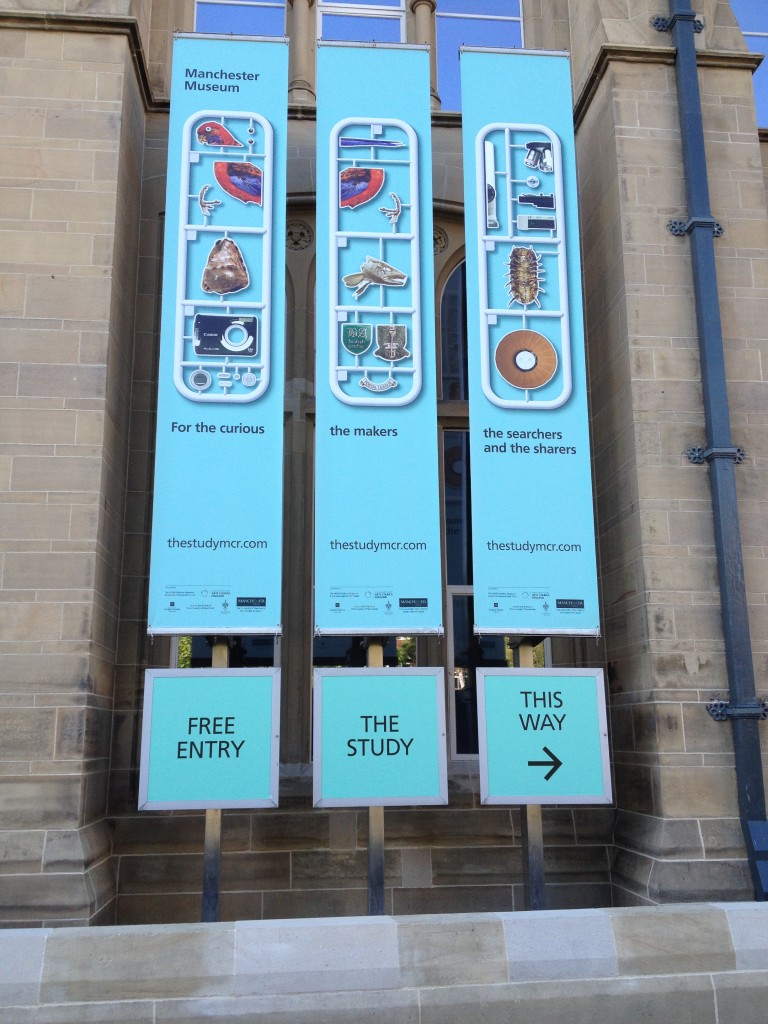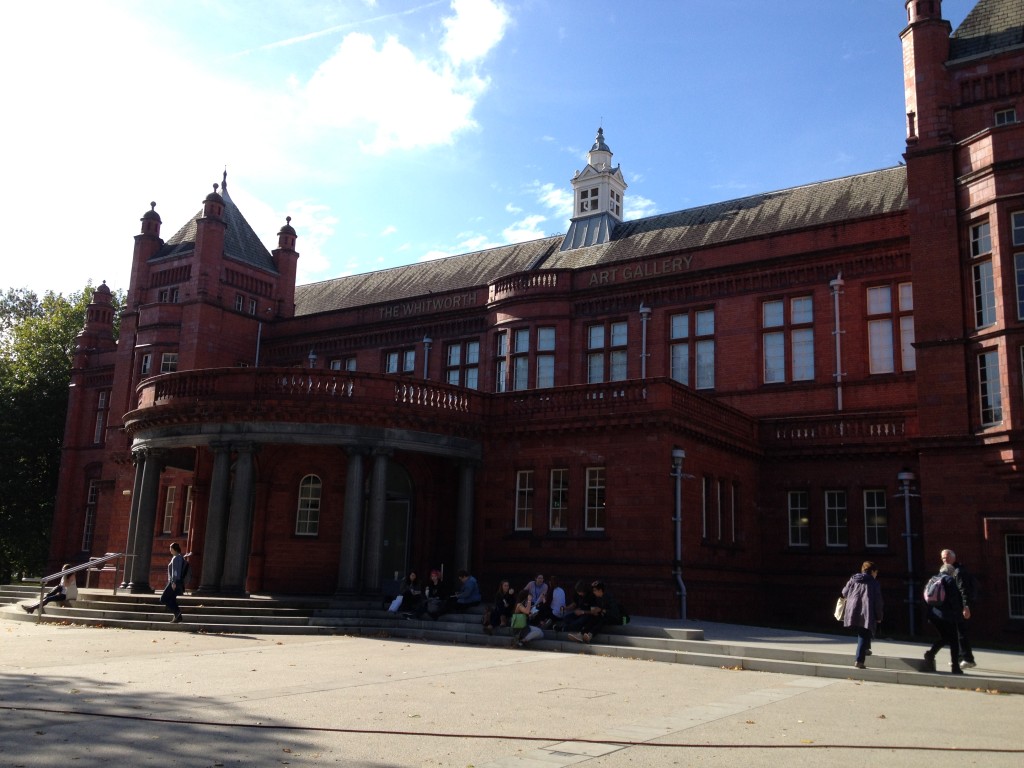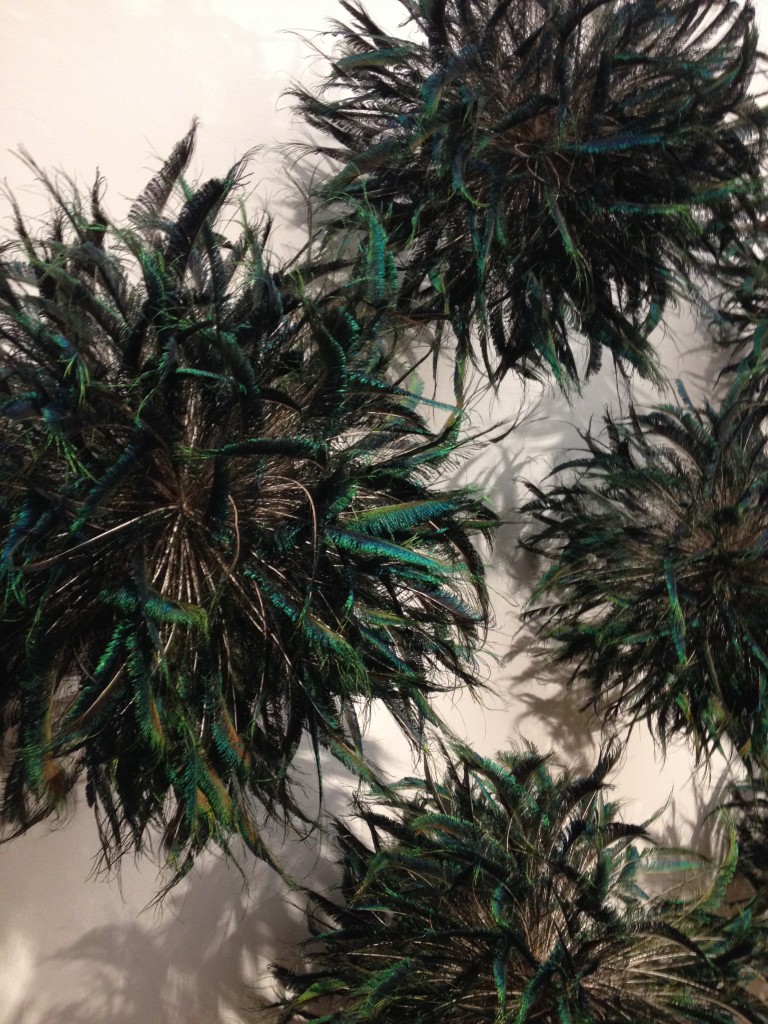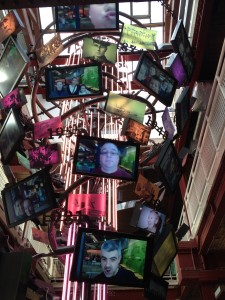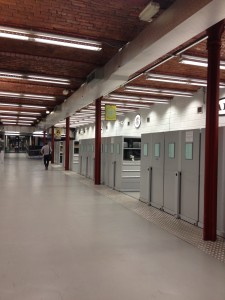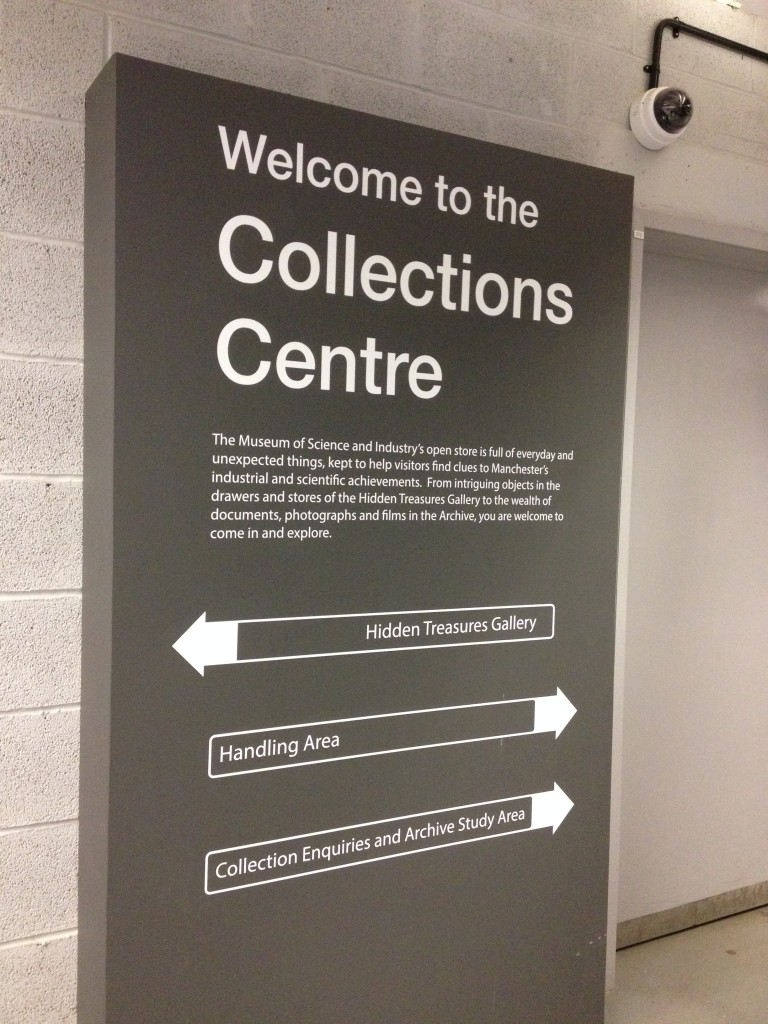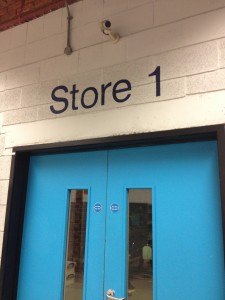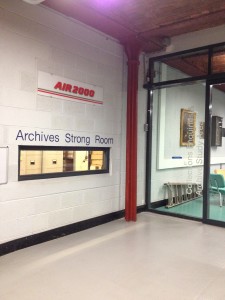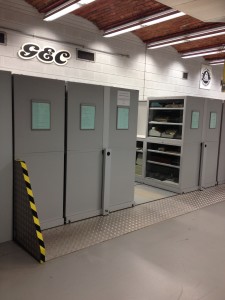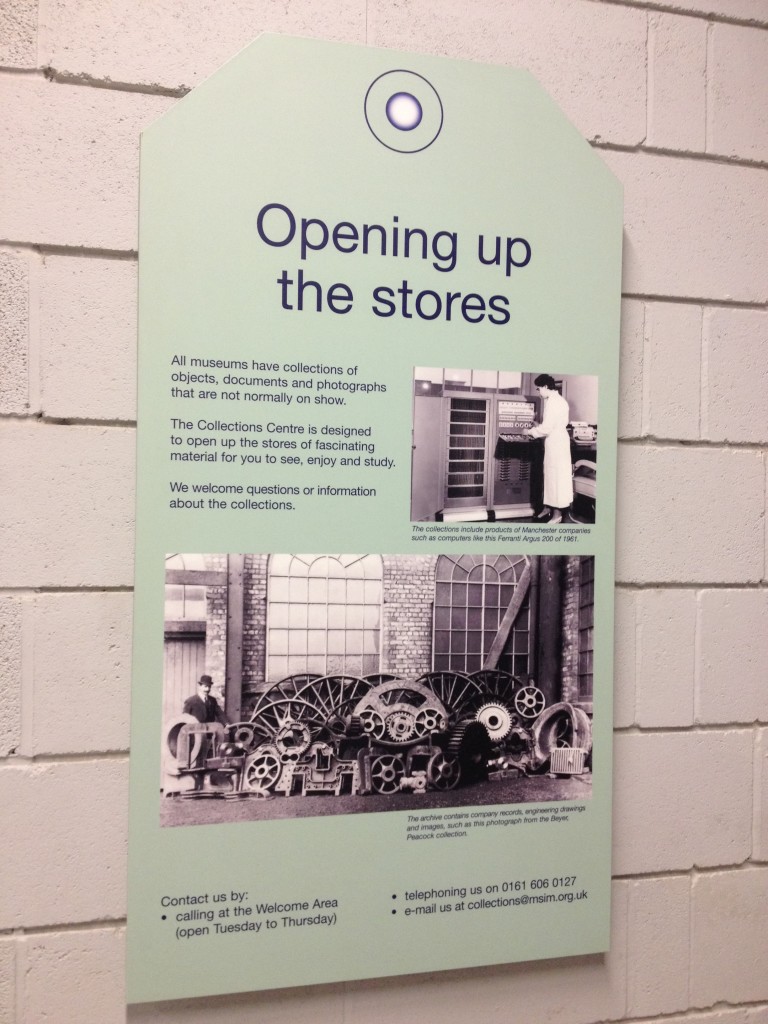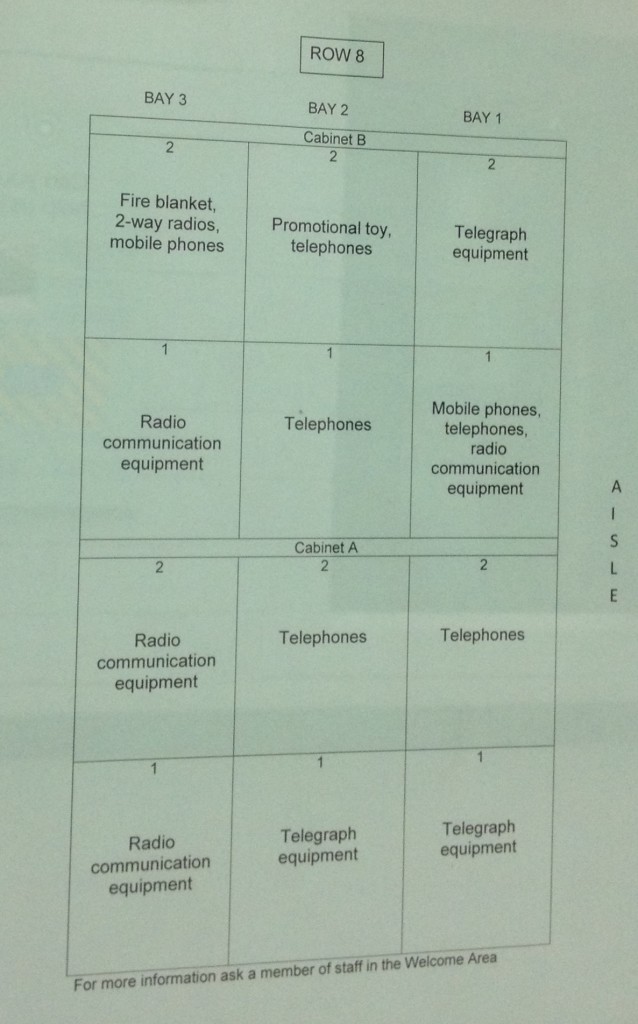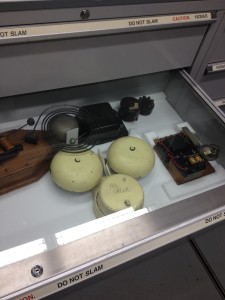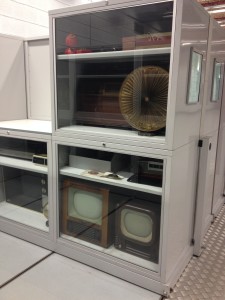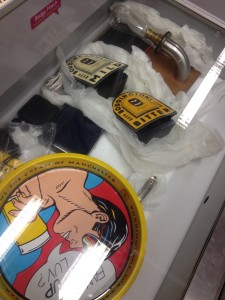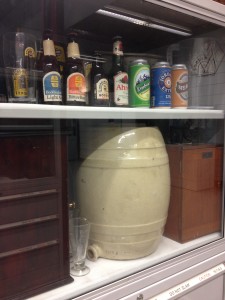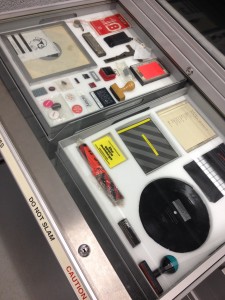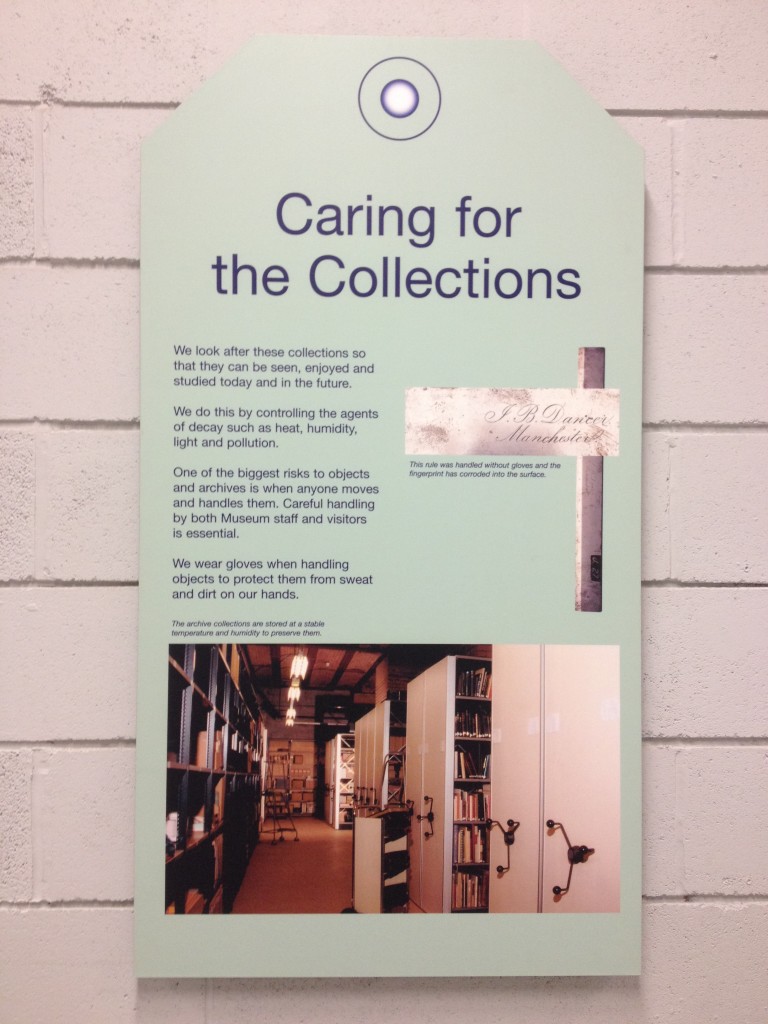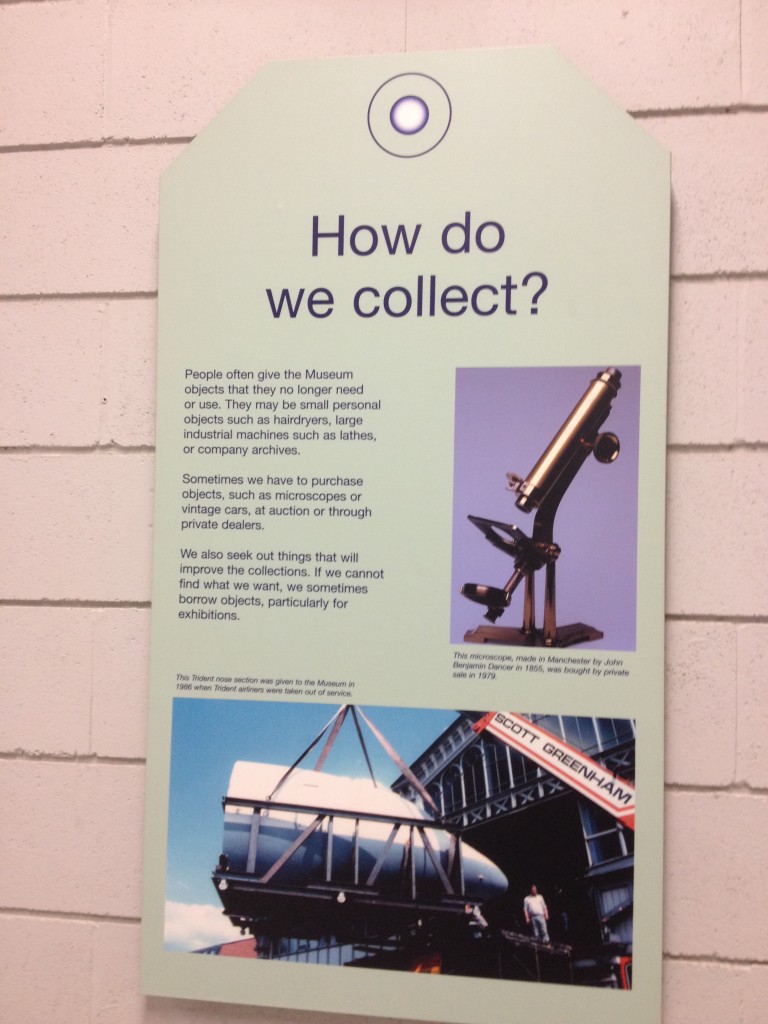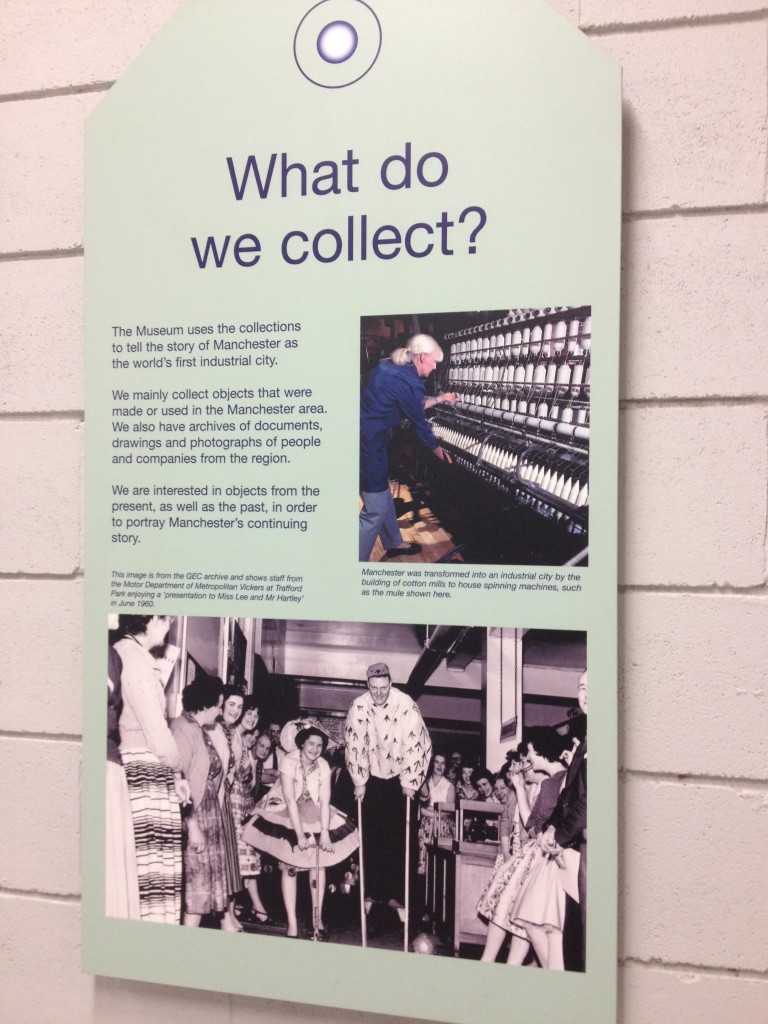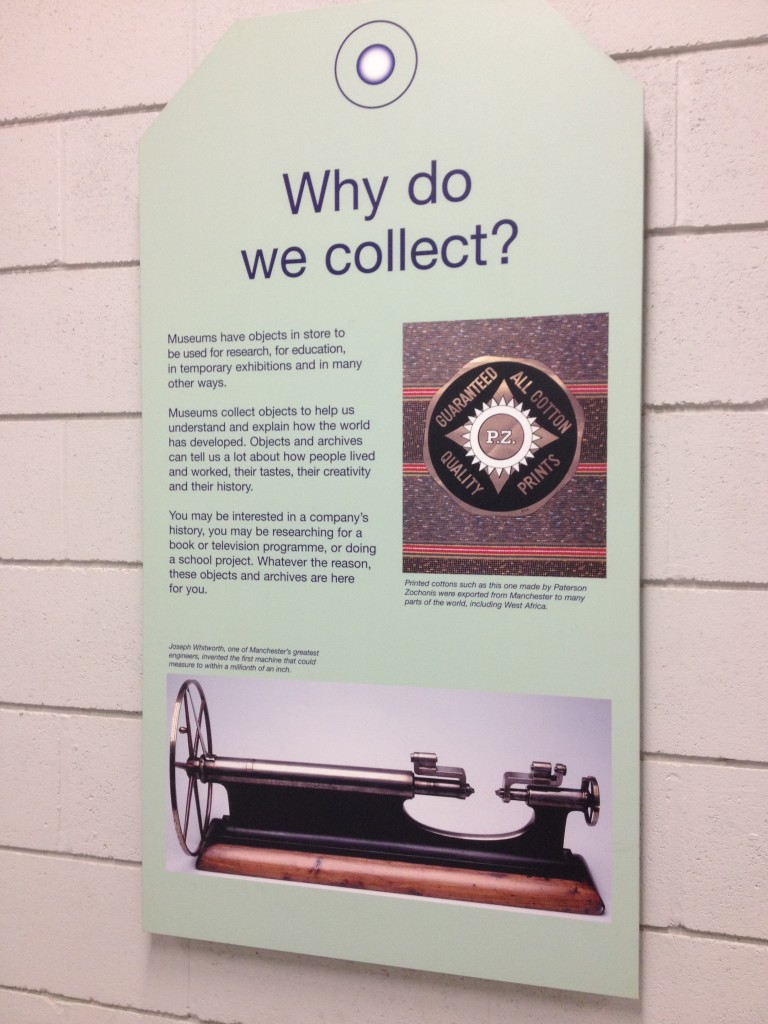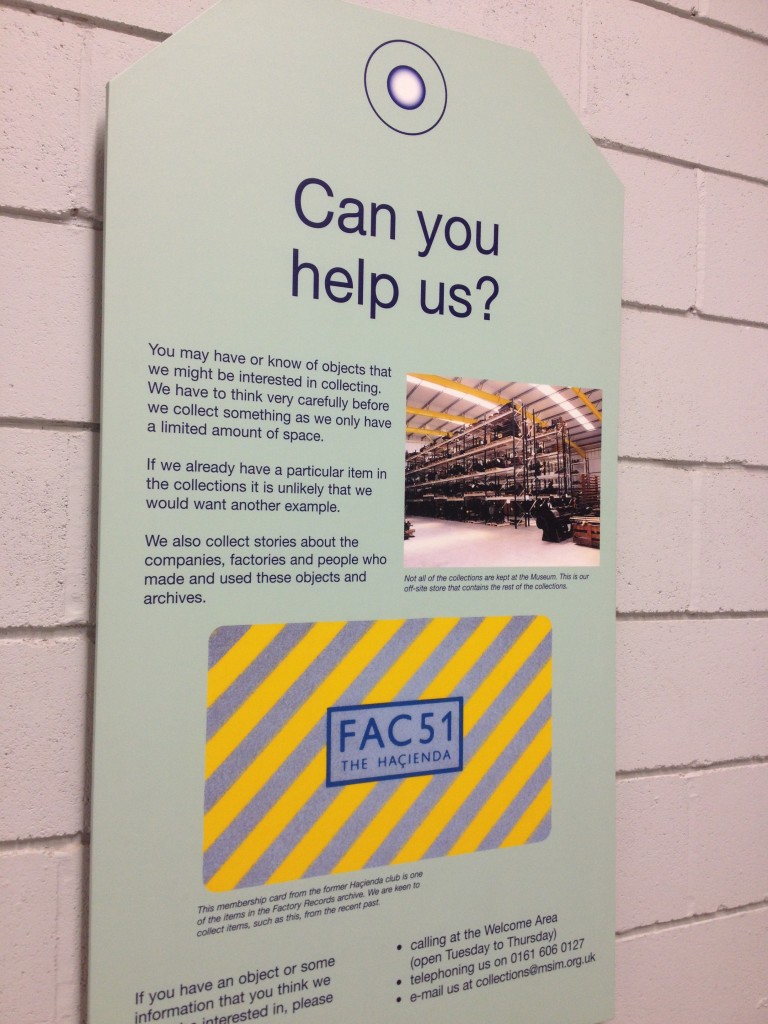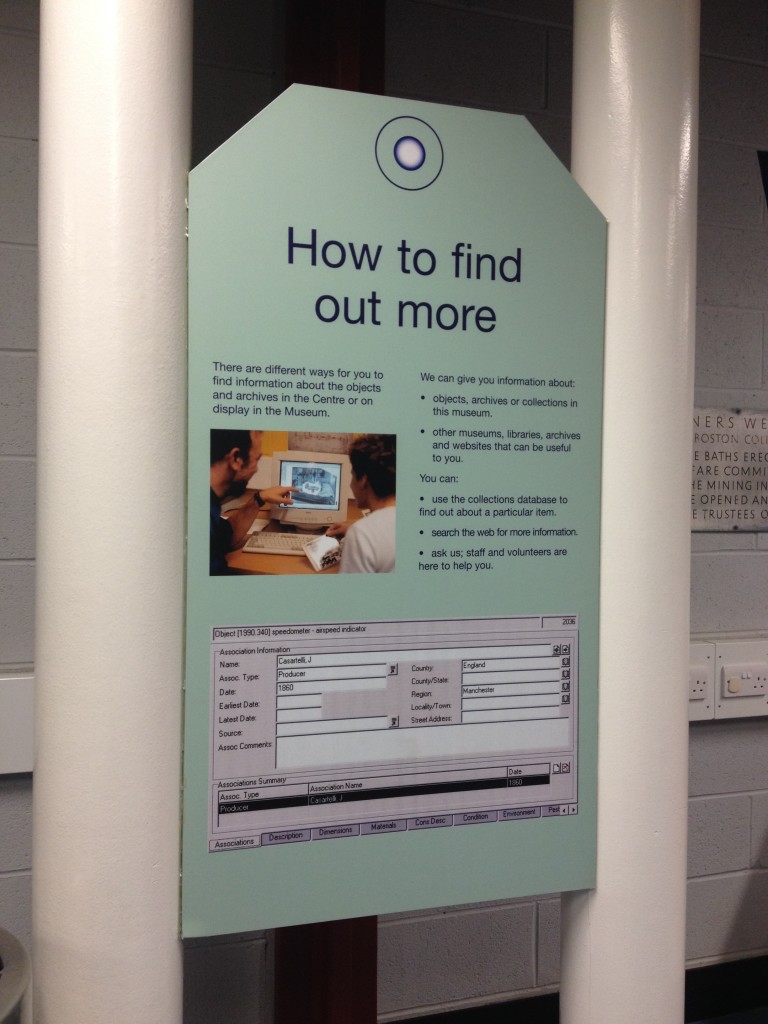Manchester is a city well provisioned with museums run by Manchester City Council, University of Manchester, independent charitable trusts, and national museum groups that receive government funding. Courses in Curating and Museum Studies are taught at University of Manchester and Manchester Metropolitan University, guaranteeing a supply of professional practitioners able to staff these institutions.
This was a flying visit to one of my favourite cities, the post-industrial aesthetic really appeals. I’ve been to Manchester a few times over the last twenty years, and this time I noticed the pace of change had upper a gear; driving a full circuit of the inner ring road provided a succinct tour of ongoing regeneration. Modernisation has also been on the agenda at the city’s museums, and with just a few hours to spare, I chose to re-visit two institutions to see how they’ve changed. Starting on Oxford Street, which is home to two universities and a handful of museums, at street level it’s a bit “student ghetto” but the spectacular mix of Victorian and contemporary architecture, leading to Whitworth Park, creates an impressive backdrop. The first thing I noticed were a set of banners outside Manchester Museum (anthropology and history) that put me in mind of Lynn Dierking and John H. Falk’s classification of museum visitors based on their perceptions, aims and behaviour, theories they’ve developed from 1992’s The Museum Experience to Falk’s comprehensive explication of “Visitor Studies” in Identity and the Museum Visitor (2009). This is city with a massive catchment area, working as hard as the London-based national museums to provide museum services for schools, families, students and researchers of the widest social diversity; and the message of those banners is, however you want to use this museum, come on in!
Whitworth Art Gallery
Oxford Road, Manchester
Visited, 6 October 2015
Enticed by the massive press coverage of the reopening, the Whitworth was top of my list. My last visit was back in the 1990s (to an exhibition of Textile Art by Lucienne Day). An extensive renovation has won prizes for MUMA’s architecture and helped earn the prestigious Art Fund “Museum of the Year 2015” award. Being named by Leading Cultural Destinations (LCD) as Europe’s Best Emerging Cultural Destination is the definition of “the icing on the cake”, the Whitworth beat Barcelona’s Museu del Disseny and Milan’s Fondazione Prada to the prize.
From the front the original red brick facade, a model of municipal elegance, looks unchanged; the renovation is discretely revealed. A cool rotunda foyer with smart retail spaces either side is followed by a series of galleries that seem to span the full width of the building, with room dividers dissecting a meandering route through temporary exhibitions and changing displays. Stairs punch into upper and lower levels enabling visitors to navigate directly from one gallery to another. The shows merge, perhaps a little too seamlessly, and although this mitigates that sense of “gallery fatigue” that often deter visitors for entering “yet another” display, it could be confusing. The start and end of exhibitions need to be defined, by way of signage or display devices, without destroying that special tranquility. Filter onto a glazed walkway that introduces the park into the interior and the impressive extent of the addition is revealed, ending in a cafe that juts further into the greenery. The usual monolithic architectural photography doesn’t do this justice, as the user experience is enhanced by the subtle and dramatic lighting changes.
I didn’t have long much time to explore but reckoned there was enough content on offer for a day’s perusal, plus lunch(!); instead I marched off to nerdsville.
Museum of Science and Industry
Liverpool Road, Manchester
Visited, 6 October 2015
Around the turn of the Millennium I visited the Museum of Science and Industry (part of the Science Museum Group) but in an organised tour, and didn’t see much beyond the most impressive machine sheds. This time, my interest in archives and stores led me to the basement Collections Centre, a combined education and research space catering to schools, scholars and the public, which opened in 2001. Giant labels carry clear explanations, offering concise definitions of archives, collections, research and conservation (see above); the stores hold examples of historical technology and ephemera relating to communications, media, transport and manufacturing, particularly local Manchester industries; handling areas, secure storage and an Archive Study Area offer various ways to engage with the collections; but the Hidden Treasures Gallery which borrows the visual language of the store, with (fixed) rolling stacks and glass-topped drawers, offers the most surprises. Rather than isolated in formal displays, objects are displayed stacked or bunched, creating an immediacy that echoes their non-art status. It’s still a feast for the eyes but suggests regular handling, and the implied spontaneity suits these once functional objects. However, although they may have been “everyday” or designed for heavy use, time and obsolescence have made them rare. Are the storerooms crammed with multiples? This style of access to “working” collections ticks a number of boxes but it is interesting to consider how it might work in a different “type” of museum, with objects that are less robust, which might be batch-produced or one-off, or come from the more dynamic sectors of contemporary consumption, promising constant “innovation”; how, then, do you choose what to conserve?
I could have spent hours in the “basement” and presume that the rolling stacks are regularly moved to rotate displays and satisfy repeat visitors; and I had a giggle at the fac(t) that ephemera from Factory Records sits alongside the detritus of Manchester’s bygone industrial era, which is perfect considering that its identity borrows from the graphic language of the “hazard zone”. Being included in this collection guarantees Factory Records a place in history (beyond the fetishised printed artefacts in design collections) by recogising its contribution to the city as a “creative industries” business and a major player in the vibrant entertainment scene.
The final instructional label, “How to find out more”, gives succinct instructions for investigating the collections further. When asked staff at the information desk explained how to use the archive; and the reading room was stacked with leaflets about history groups, local museums and specialist archives.
Housed in a number of renovated sheds, alongside rail and canal links, the Museum of Science and Industry is a full-immersion experience even before you interact with displays. It’s on a daunting scale and therefore is never crowded, unlike the London “branch”. It could be explored over a couple of days and offers local visitors an educational experience they can keep returning to. As my favourite killer android says, “I’ll be back……”
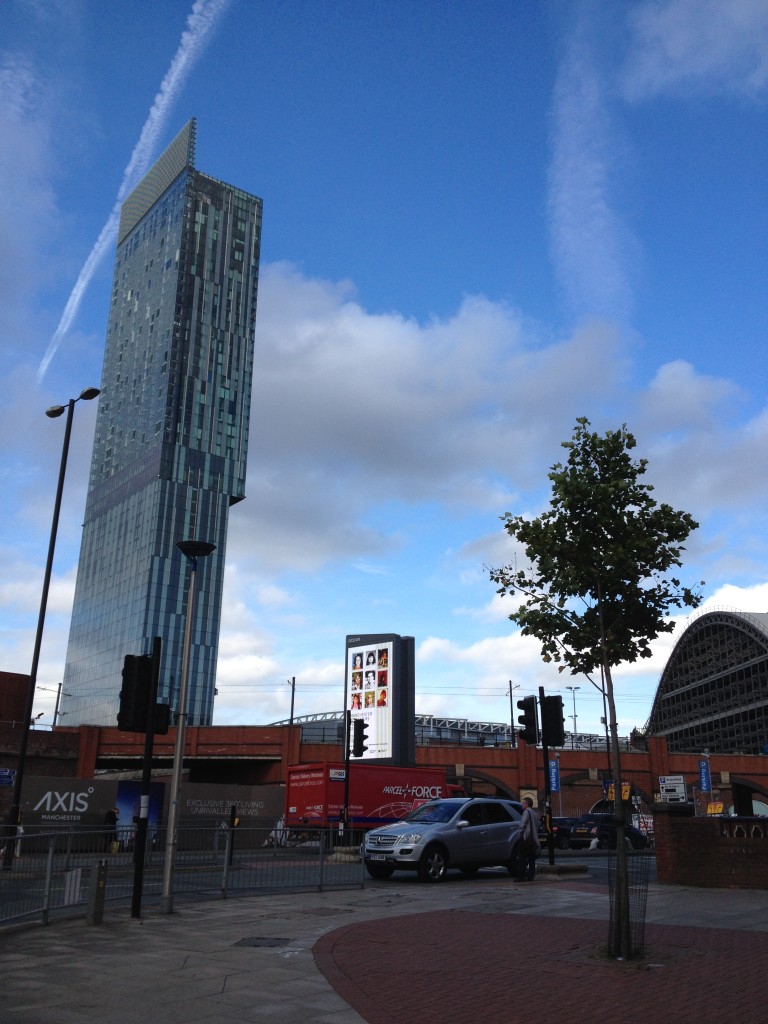
Beetham Tower, home to Hilton Deansgate, is the 11th tallest building in the UK, a potent symbol of Manchester’s regeneration.
All photographs taken by Liz Farrelly, on an Apple iPhone 4S.

